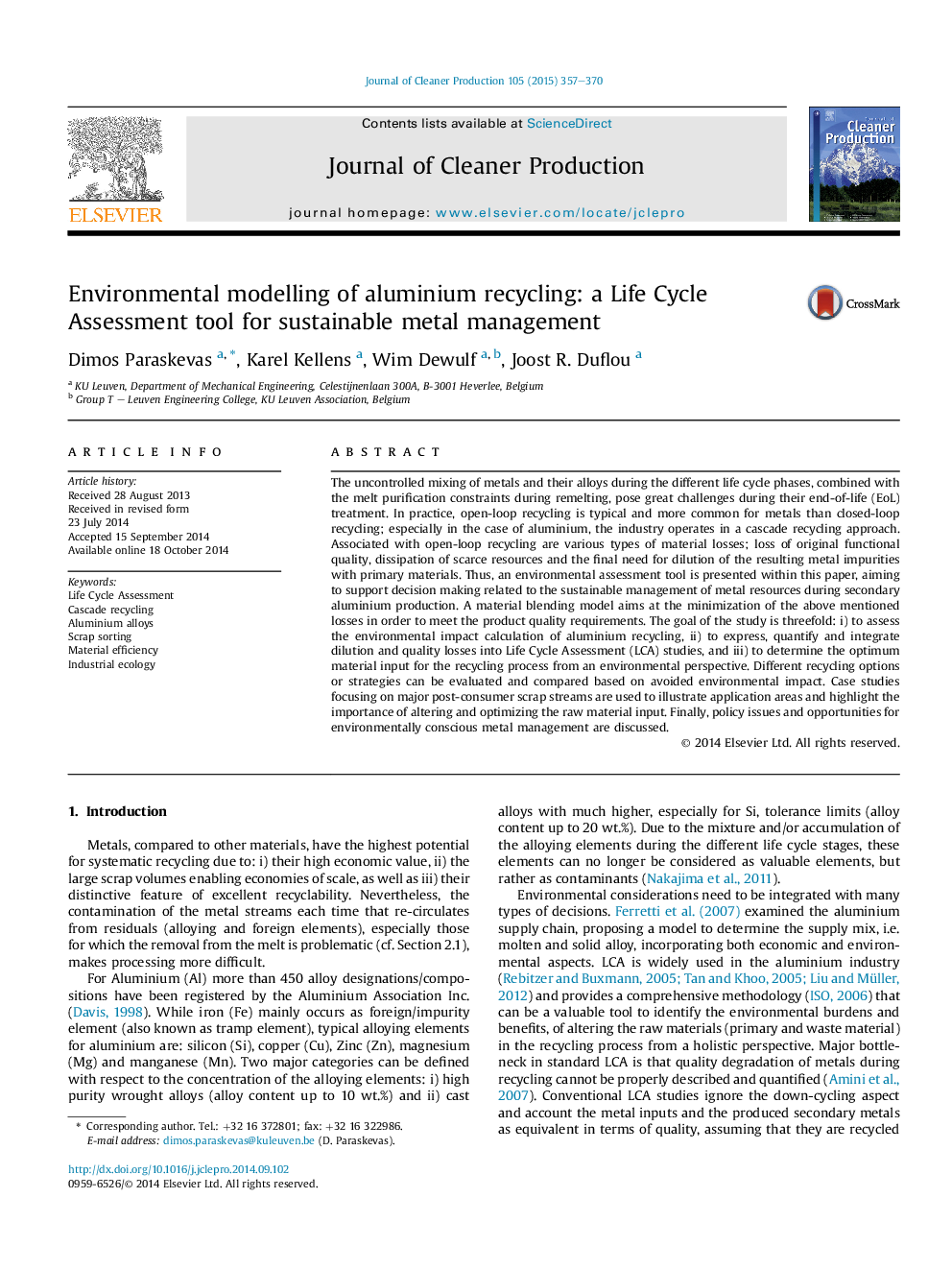| کد مقاله | کد نشریه | سال انتشار | مقاله انگلیسی | نسخه تمام متن |
|---|---|---|---|---|
| 1744553 | 1522141 | 2015 | 14 صفحه PDF | دانلود رایگان |
• A LCA tool is presented to evaluate the efficient resource use during Al recycling.
• The optimal material input for the recycling process is determined.
• Quality, dilution and material losses during metal recycling are expressed in LCA.
• Scrap sorting aims to minimize metal down-cycling and maximize scrap usage.
• Policy issues for environmentally conscious metal management are discussed.
The uncontrolled mixing of metals and their alloys during the different life cycle phases, combined with the melt purification constraints during remelting, pose great challenges during their end-of-life (EoL) treatment. In practice, open-loop recycling is typical and more common for metals than closed-loop recycling; especially in the case of aluminium, the industry operates in a cascade recycling approach. Associated with open-loop recycling are various types of material losses; loss of original functional quality, dissipation of scarce resources and the final need for dilution of the resulting metal impurities with primary materials. Thus, an environmental assessment tool is presented within this paper, aiming to support decision making related to the sustainable management of metal resources during secondary aluminium production. A material blending model aims at the minimization of the above mentioned losses in order to meet the product quality requirements. The goal of the study is threefold: i) to assess the environmental impact calculation of aluminium recycling, ii) to express, quantify and integrate dilution and quality losses into Life Cycle Assessment (LCA) studies, and iii) to determine the optimum material input for the recycling process from an environmental perspective. Different recycling options or strategies can be evaluated and compared based on avoided environmental impact. Case studies focusing on major post-consumer scrap streams are used to illustrate application areas and highlight the importance of altering and optimizing the raw material input. Finally, policy issues and opportunities for environmentally conscious metal management are discussed.
Figure optionsDownload as PowerPoint slide
Journal: Journal of Cleaner Production - Volume 105, 15 October 2015, Pages 357–370
